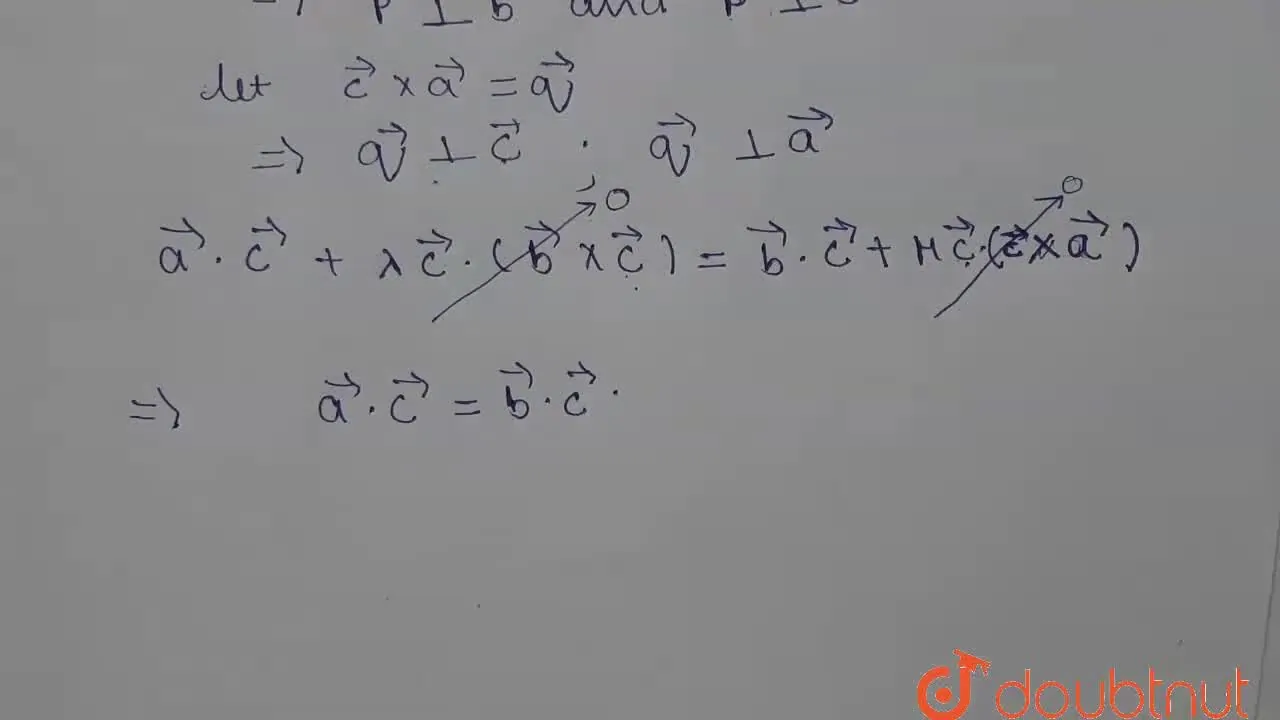The two lines →r=→a+→λ(→b×→c)and→r=→b+μ(→c×→a) intersect at a point where →λandμ are scalars then (A) →a,→b,→c are non coplanar (B) |→a|=∣∣→b∣∣=|→c| (C) →a.→c=→b.→c (D) λ(→bx→c)+μ(→cx→a)=→c
→a×→c=→b×→c
→a.→c=→b.→c
→b×→a=→c×→a
none of these
The correct Answer is:B
NA
Related Playlists
- BOOK - OBJECTIVE RD SHARMA ENGLISHCHAPTER - PLANE AND STRAIGHT LINE IN SPACE EXERCISE - Exercise33videos
PLANE AND STRAIGHT LINE IN SPACE
- BOOK - OBJECTIVE RD SHARMA ENGLISHCHAPTER - MISCELLANEOUS EQUATIONS AND INEQUATIONS EXERCISE - Chapter Test29videos
MISCELLANEOUS EQUATIONS AND INEQUATIONS
- BOOK - OBJECTIVE RD SHARMA ENGLISHCHAPTER - PROPERTIES OF TRIANGLES AND CIRCLES CONNECTED WITH THEMEXERCISE - Chapter Test55videos
PROPERTIES OF TRIANGLES AND CIRCLES CONNECTED WITH THEM
Similar Questions
If →a,→band→c are non coplaner vectors such that →b×→c=→a, →c×→a=→b and →a×→b=→c then ∣∣→a+→b+→c∣∣=
View SolutionIf →a,→b,→c are any three non coplanar vectors, then
(→a+→b+→c).(→b+→c)×(→c+→a)View SolutionIf →a,→b,→c are vectors such that ∣∣→b∣∣=|→c| then {(→a+→b)×(→a+→c)}×(→b×→c).(→b+→c)=
View SolutionIf →a,→b,→c are non-null non coplanar vectors, then
[→a−2→b+→c→b−2→c+→a→c−2→a+→b]=View SolutionIf the vectors →a,→b,and→c are coplanar show that ∣∣ ∣ ∣∣→a→b→c→a.→a→a.→b→a.→c→b.→a→b.→b→b.→c∣∣ ∣ ∣∣=0
View SolutionIf →A,→B,→C are non-coplanar vectors then →A.→B×→C→C×→A.→B+→B.→A×→C→C.→A×→B=
View SolutionIf the three vectors →a,→b,→c are non coplanar express each of →b×→c,→c×→a,→a×→b in terms of →a,→b,→c.
View Solutionif →a×→b=→c,→b×→c=→a, where →c≠→0 then (a) |→a|=|→c| (b) |→a|=∣∣→b∣∣ (c) ∣∣→b∣∣=1 (d) |→a|=∣∣→b∣∣=|→c|=1
View SolutionIf →a is perpendiculasr to both →band→c then (A) →a.(→b×→c)=→0 (B) →a×(→bx→c)=→0 (C) →a×(→b+→c)=→0 (D) →a+(→b+→c)=→0
View SolutionIf →c=→a×→b and →b=→c×→a then (A) →a.→b=→c2 (B) →c.→a.=→b2 (C) →a⊥→b (D) →a∣∣→b×→c
View Solution


